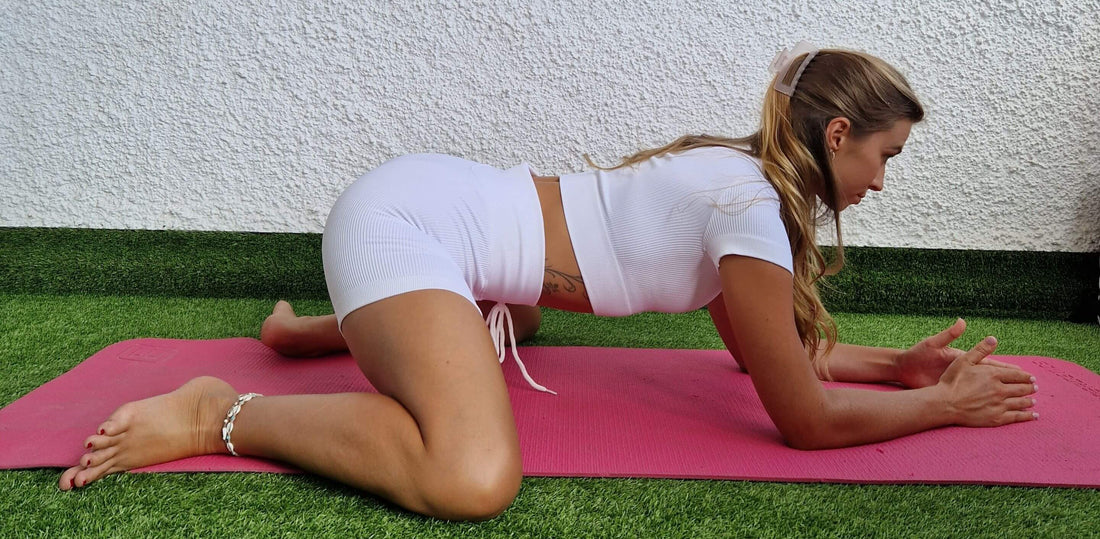Isn't it fascinating how certain animal-inspired movements can benefit human health? One such beneficial exercise is the frog stretch, known for its immense flexibility-enhancing benefits. But what exactly is the frog stretch?
Decoding the Frog Stretch
As the name suggests, the frog stretch mimics a frog's position. It's a deep, grounding stretch primarily targeting your inner thighs, groin, and hips. Got an image of a relaxed frog in your mind? That's the look you're going for!
Why Incorporate the Frog Stretch into Your Routine?
The frog stretch is your golden ticket if you want to improve hip mobility. It's particularly effective for athletes and fitness enthusiasts whose sports or workouts require deep, dynamic hip movements. Plus, it's an excellent tool for combating the stiffness of a sedentary lifestyle.
Dive into the Anatomy of the Frog Stretch
Let's dive a bit deeper. What muscles does this wonder stretch actually target?
Understanding the Muscles Involved in Frog Stretch
When performing the frog stretch, you primarily work the adductors, a group of muscles in your inner thighs. These muscles play a crucial role in hip flexion and extension. By strengthening and stretching them, you promote healthier, more flexible hips.
How the Frog Stretch Enhances Flexibility
Ever wondered why frogs are such excellent jumpers? It's all about flexibility! Similarly, the frog stretch enhances your flexibility, particularly around the hip joints. This increased range of motion can translate to improved performance in sports, better posture, and even lessened back discomfort.
Perfecting the Frog Stretch Technique
Performing the frog stretch correctly maximizes its benefits while minimizing potential injury risk.
The Correct Frog Stretch Posture
But how do you "get it right"?
Positioning Your Body
Firstly, start on all fours. Gradually widen your knees until you feel a comfortable stretch in your inner thighs. Ensure your shins and feet are aligned with your knees.
Maintaining Alignment and Balance
Remember, your hips should stay square and centered, in line with your knees. Your back must remain flat, and your gaze should be towards the floor.
A Step-by-Step Guide to the Frog Stretch
Now you know the basics, but what about the step-by-step process? Stay tuned, as we'll delve into that in the following sections of this comprehensive guide on the frog stretch!
Variations and Progressions of the Frog Stretch
Stretching, like any other form of exercise, should be progressive. Let's explore how you can modify and advance your frog stretch.
Simple Frog Stretch Variations to Try
Don't be disheartened if the traditional frog stretch is challenging. You can start with gentler variations such as the half frog stretch, where you extend one leg behind you while maintaining the other in the frog position. This helps to acclimate your body to the stretch gradually.
Progressing from Beginner to Advanced Frog Stretch
Ready for more intensity? Once comfortable with the basic frog stretch, you can deepen the stretch by gently pressing your hips back or moving onto your forearms. This intensifies the stretch, promoting further flexibility.
Integrating the Frog Stretch into Your Fitness Regimen
The frog stretch makes a valuable addition to any workout routine.
When to Incorporate the Frog Stretch
A versatile exercise, the frog stretch fits well into your cool-down routine, promoting muscle recovery and preventing stiffness. It's also effective as a standalone stretch on your rest days to maintain hip mobility.
Combining Frog Stretch with Other Exercises
Pair the frog stretch with other mobility exercises such as lunges and pigeon pose for a comprehensive flexibility workout.
Safety Measures for Performing the Frog Stretch
Like with any exercise, safety first!
Potential Risks and How to Avoid Them
Overstretching is a potential risk with the frog stretch. Avoid this by listening to your body and never pushing beyond a comfortable stretch. Using a soft surface or yoga mat can prevent knee discomfort.
Listening to Your Body
Remember, it's your journey. Mild discomfort is okay, but pain is a red flag. Always warm up before stretching and keep your movements slow and controlled. When it comes to the frog stretch, slow and steady wins the race!
Conclusion
Incorporating the frog stretch into your fitness routine can be a game changer. This exercise can help you unlock a new level of hip flexibility and overall mobility. Practice consistently, progress patiently, and the frog stretch might become your new favorite move for flexibility.
Frequently Asked Questions
How often should I perform the frog stretch?
Aim for at least 2-3 times per week. As the stretch is quite intense, giving your body time to recover between sessions is essential.
Can the frog stretch help with lower back pain?
Yes, it can! The frog stretch can help alleviate stress on the lower back by improving hip mobility. However, always consult a medical professional if you're experiencing persistent back pain.
Is the frog stretch suitable for beginners?
Absolutely! Start with gentler variations and progressively work your way up to the full frog stretch as your flexibility improves.
What if I can't get into the full frog stretch position?
That's perfectly okay. Everyone's flexibility journey is different. Start where you are, use variations, and you'll gradually see improvement.
Can the frog stretch improve my performance in sports?
Indeed! The frog stretch is particularly beneficial for sports that demand good hip mobility such as martial arts, dancing, or gymnastics. But remember, consistency is vital.

